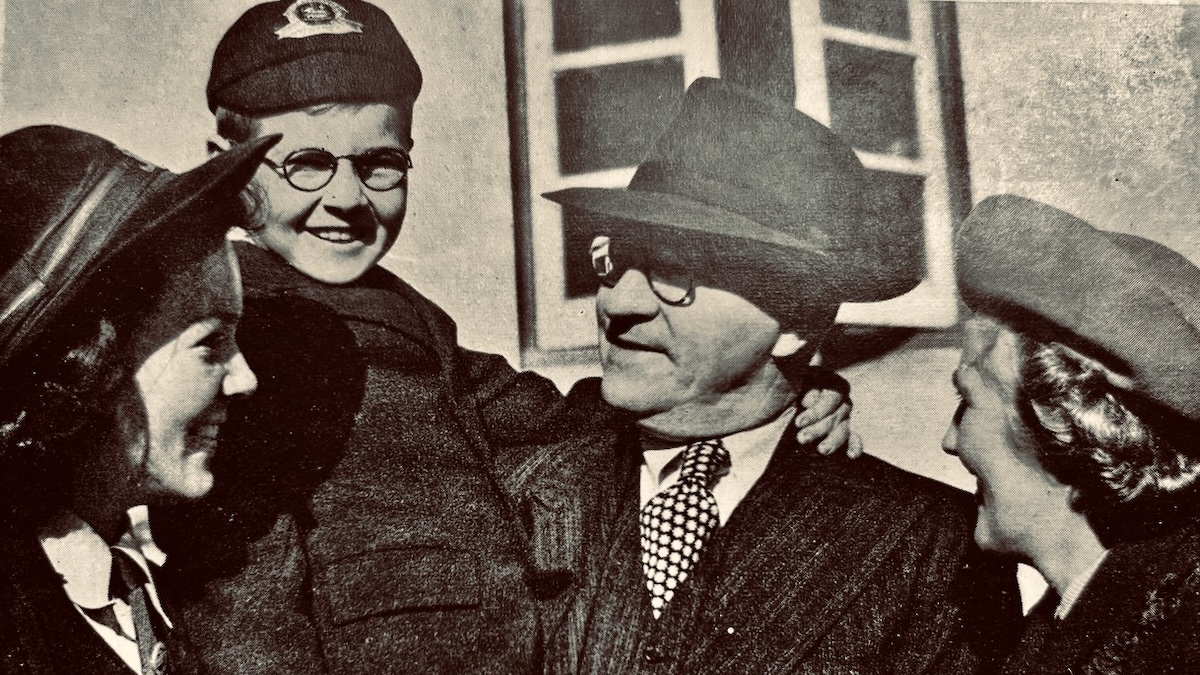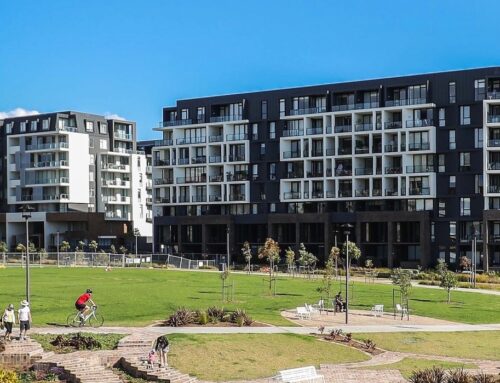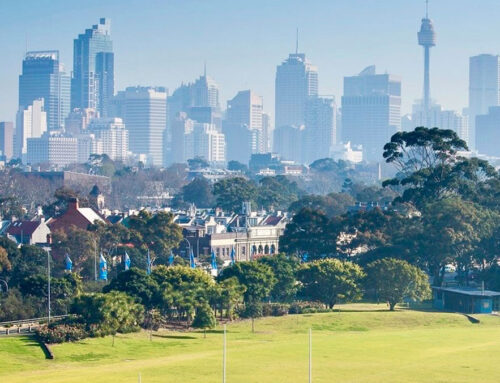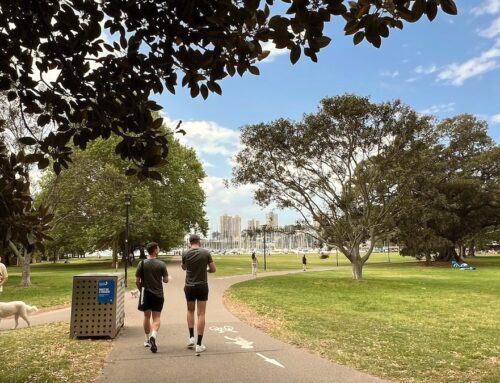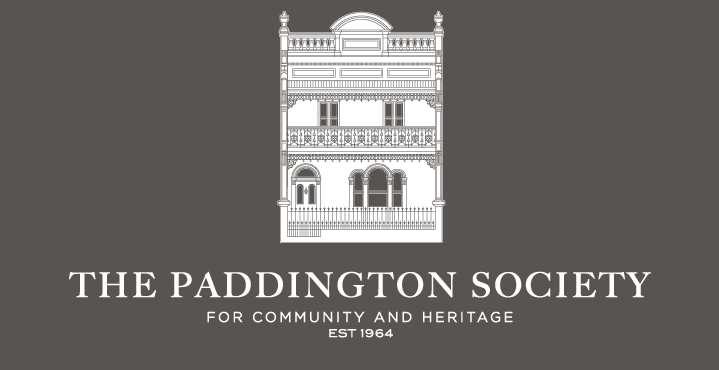Have you ever wondered about the history of the E.J. Ward Community Centre located on the corner of McGarvie and Underwood Streets? As reported in “McGarvie Street – It’s History in Paddington” by William Penson this imposing building opened in 1881 as The Metropolitan Hotel and was a popular meeting place and venue for local political gatherings. The Metropolitan had a long and volatile history, including a murder taking place in 1888. After nearly 75 years of trading, it closed in 1954 and later reopened as the E.J. Ward Paddington Community Centre.
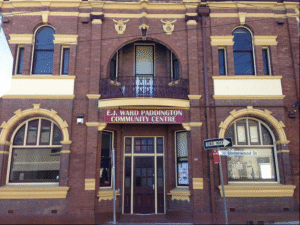
E.J. Ward Paddington Centre
The building is named after Edward John “Eddie” Ward (1899–1963), the long-serving Labor MP for East Sydney, who represented the electorate for more than 30 years and held ministerial posts under Prime Ministers John Curtin and Ben Chifley. Leaving school at 14, he worked in various manual jobs, including at the Eveleigh Railway Workshops, where he was dismissed for striking in 1917. A former boxer and lifelong teetotaller, Ward was known for his fiery speeches, strong defence of working people, and unwavering loyalty to his community. He was suspended from Parliament 15 times and narrowly lost to Gough Whitlam in the 1960 deputy leadership vote.
Eddie and Edith’s daughter, Dorothy Ward, was born in Surry Hills in 1931, the year of his election to the House of Representatives in Federal Parliament. The Paddington Society had the opportunity to interview Dorothy in 2015 and hear her memories of growing up in Paddington.
A Paddington Childhood

Eddie Ward with his wife and two children, 1947 (source: Eddie Ward – Firebrand of East Sydney by Elwyn Spratt)
For the first ten years of her life, Dorothy and her younger brother, another Edward, lived at 110 Liverpool Street, and later at 38 Heeley Street. “Paddington had everything – position, views,” she once said. Though some people were embarrassed to admit they lived there, it was, in her words, “a cut above Surry Hills.” When post-war prosperity sent many families fleeing to the outer suburbs, Dorothy never understood why. “I loved Paddington and hope people living there today realise how lucky they are,” said Dorothy.
In her childhood, Paddington was a place of treeless streets, hard surfaces, bitumen and concrete instead of the leafy streets that we know today. The back gates opened onto rear lanes where local children played together. Paddington Street was “always posh,” while Underwood and Shadforth Streets were home to rougher characters, and occasionally to petty criminals. Most people were proud of their houses, kept front gardens tidy and often scrubbed their front steps.
The suburb was alive with shopkeepers and tradesmen who knew everyone other by name. Dorothy remembered Mr Bennett’s general store in Heeley Street, Mr Parry’s fruit shop at Five Ways, Cyril Thompson the butcher, and “Uncle Lou,” who ran another corner shop. There were also the itinerant sellers, including the ice man, the “rabbitoh” who sold rabbits during wartime food rationing, and the clothes-prop man calling through the streets to sell or repair props that were used to hold up clothes lines.
Five Ways was a bustling hub, with its butcher, chemist, grocer, and children’s clothing store. Oxford Street boasted general businesses including bakers, fruiterers, cake shops and toy shops. There were two different tram routes, one travelled along Oxford Street and the other across the viaduct to Glenmore Road, Five Ways and on to Woollahra and Bondi. Dorothy’s father Eddie often remarked that Sydney “would live to regret it” when and if the trams were removed.
Her childhood was filled simple pleasures, Saturday matinees at the Five Ways Cinema for sixpence, family picnics on the harbour, beach trips by tram to Bondi and Maroubra, and cricket matches at Trumper Park or the SCG. The SCG was also the venue for football, boxing matches and political debates. There were dances at Bronte Surf Club, more formal balls at Paddington Town Hall and Maccabean Hall, and the annual Royal Easter Show held at the Showground in Moore Park.
She remembers the Redex car trials starting in Centennial Park. “Paddington was full of life, everyone knew each other.” There was a real mix of people living in Paddington at that time, including wealthier families, migrants and some indigenous families.
Homes in Liverpool and Heeley Streets
The Ward’s home at 110 Liverpool Street had the toilet and laundry “out the back” and a small gas water heater in the bathroom upstairs. They were the first family in the street to buy a refrigerator to replace their old icebox. Dorothy can remember playing with up to ten children in Boundary Lane at the rear and making life-long friends with many local families.

38 Heeley Street, E.J. Ward home, indicated by arrow (source: Eddie Ward – Firebrand of East Sydney by Elwyn Spratt)
Later they moved to 38 Heeley Street, formerly a boarding house; for the family it was a brighter corner terrace with a side garden and a frangipani tree. Eddie’s growing political prominence led to long queues of constituents waiting in their hallway and even onto the street for a word with him. Privacy was rare, but Dorothy treasured the times he was home from Canberra, enjoying their long walks together, watching the debates he held on the corners at Five Ways, and their shared love of sport.
Dorothy’s Paddington was also remembered as a place of drama. There was the great hailstorm of the late 1940s that shattered windows and flooded Boundary Street, the wartime sirens during the midget submarine attack on Sydney Harbour; and blackouts, rationing, and barbed wire along the beaches. But as a child, the war years seemed more exciting than frightening, although she remembered her nanny hiding under the stairs when the sirens wailed.
Change and Continuity
After WWII, waves of Italian and other migrants arrived, painting their terrace houses in bright colours, bringing new music, food and warmth to the old suburb. Paddington started to change as new buildings arose, some of them “ugly”, she admitted, but the spirit of the place endured.
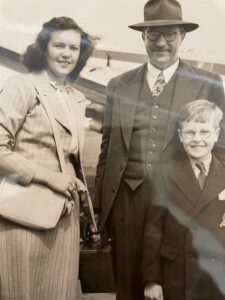
Dorothy with her father Eddie Ward and her younger brother Edward, also known as Eddie. (source: Robyn Matthews, 2025)
As Dorothy grew up she even recalled American entertainers like The Ink Spots living nearby, and seeing Johnny Ray perform in 1954 at the old Sydney Stadium in Rushcutters Bay.
In later years, Dorothy married and moved to Melbourne, settling in Camberwell, where she raised four children and enjoyed time with her six grandchildren. Yet she always spoke with great affection of her childhood and young life in Paddington.
Dorothy Barnes, née Ward, passed away in 2024, but her stories of terraces, hills and community remain an enduring part of Paddington’s memory.
Editors Notes:
- Dorothy Barnes, interviewed by Esther Hayter and Linda Gosling, 17 June 2015.
- If you have short stories about the history of your property and the community, contact the Paddington Society so we can add it to the archives of one of the world’s most famously preserved Victorian suburbs.
